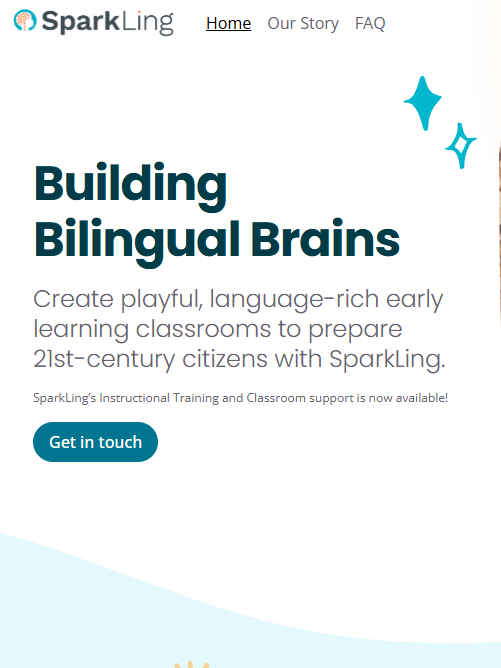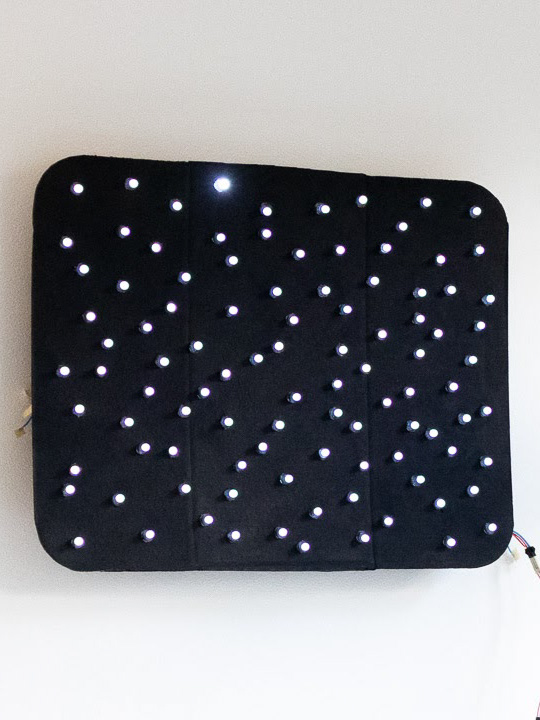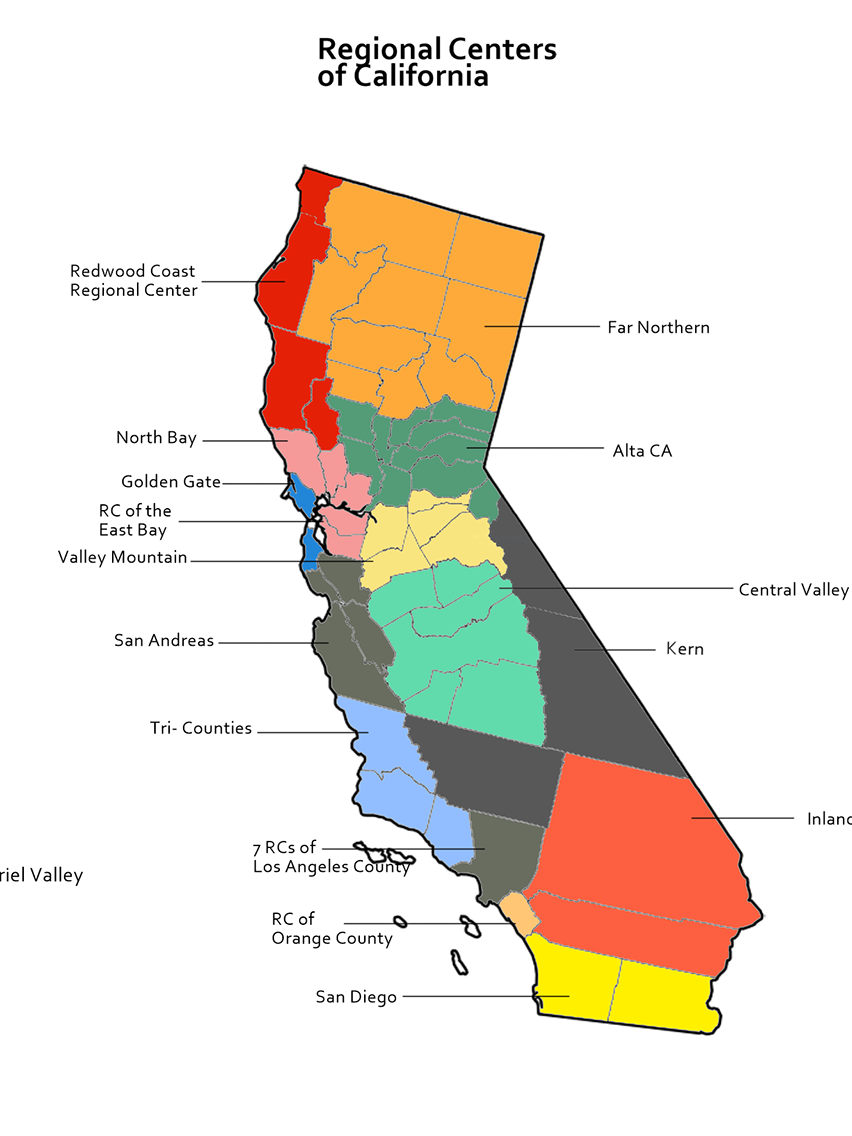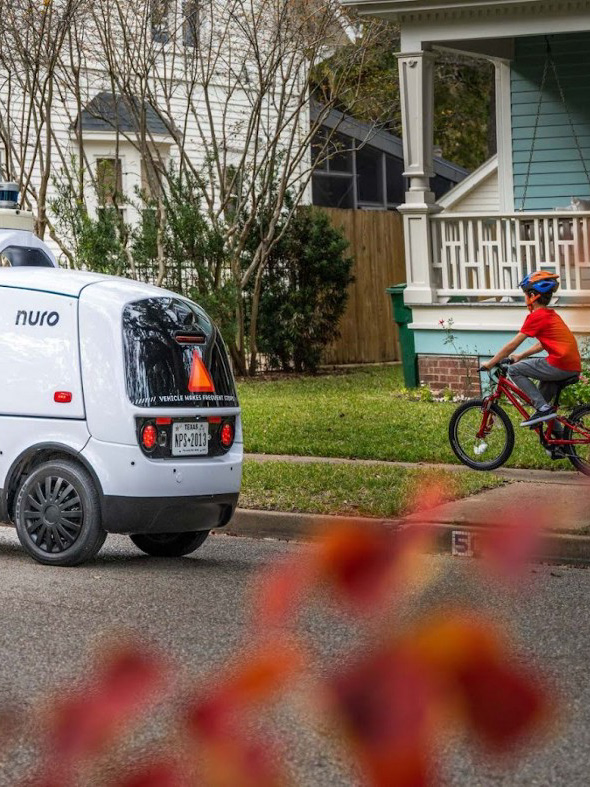I created the information architecture and content for this journey map while working with designers for visual design
Overview:
Contributions: Service Designer and Senior UX Researcher
Collaborators: Product Owner- CEO and other SMEs, Chief Strategy Officer, VP of Design Research and Strategy, VP of Partnership and Operations, Design Researcher, Designers, SMEs, Gates Foundation Program Officers
Timeline: 06/01/24-04/01/25
Project Summary:
I planned and conducted discovery research to inform the build of a digital support system incorporating novel technology with unmet needs for minoritized college students including folks from Black, Indigenous, Latine, and low-income backgrounds (referred to as focus population hereafter).
The project scope included discovery research and deliverables mapping to 16 complex features incorporating in-person and digital touchpoints that should improve the retention, grades, and graduation of students from our focus population to successfully navigate and complete their college journeys.
Photo by Olia Danilevich on Pexels
My Contribution and Process: Principles, Journey Map, Insights, Findings, and Workshopping Research
For this project I developed research materials including:
Ethnographic interviews to uncover processes and unmet needs for students and support staff
Surveys to determine frequency of needs and behaviors for students
Co-design workshops with students and staff to define principles for the incorporation of AI into a support system, student journeys, and student and support staff archetypes to enable the build of a digital support system.
For this project, I delivered:
Insights and findings
Diagrams and charts
Principles
A Student Journey Map
Student and Staff Archetypes
Research Process
Literature Review
Findings
As I quickly onboarded to this project, I reviewed academic literature and institutional statistics to understand barriers and outstanding questions for students from the focus population to navigate and successfully complete college.
1. Black and Latinx populations, and even more so men, are increasingly opting out of college.
2. Many students from the focus population don't seek support.
3. Students from the focus population may have specific strategies to navigate their needs in college, and these should be surfaced.
4. Digital tools have a wide range of affordances but it's not clear what factors make some tools more or less effective.
Hypothesis: Before creating a new system, we need to better understand focus population baseline experiences to bridge historically unmet needs with emerging technology to create more universal designs.
Key Questions
What are the common needs for which students seek support?
How?
What obstacles do they encounter?
Agnostic of support, what do students do in order to navigate college?
What works?
What doesn't?
What digital and non-digital tools and systems do students leverage for help?
Research Timeline
Research had 3 workstreams:
Workstream A:
Planning and recruitment
Live recruiting and scheduling
Research brief and protocol creation including 3 guides: 2 for staff and 1 for students
Workstream B:
Remote Ethnographic Interviews with students and staff
Survey design, dissemination and data collection
AI Co-design Workshops with students and staff
Workstream C
Synthesis, User Archetypes and Experience Mapping
Population
Population Dashboard
Recruitment was very intensive. We created very specific parameters for students and staff alike. Parameters for students were targeted to ensure we garnered enough participation from subpopulations within the focus population:
Specified racial or economic background indicated by proxies
Major or role
Balanced sample from across the US
Attending or serving at a Minority Serving Institution
Certain percentage with children
Certain percentage with disabilities
A variety of ages
Urban, Rural, and Community Colleges
In order to keep stakeholders in the loop, I created and regularly reported on our recruitment status. This was the most narrowly scoped recruitment I've ever done. I created a proposal for survey recruitment based on the time required to recruit for interviews, but agencies were unable to fulfill the level of specificity, so my team and I did it ourselves.
Synthesis
Note there are three tabs that helped to segregate data affinitized by themes and then by features and institution type.
Part of this process involved affinitizing data by specific feature, which then we then looked back over to see if institution type had any impact- see coding to the left where other tabs had this data aggregated.
For survey data, much of the information was quantitative. After setting it up in Alchemer, much of the reporting was automated.
Behavior
Ratings
Frequency
We collected data from 22 students within our focus population (roughly a 20% margin of error- used to inform prioritization of feature needs and analyze against qualitative information for deeper insight)
Synthesis was complex. I proactively coded information in datalogs and Dovetail for qualitative information to map to specific features, processes, institution type, and student assets. Qualitative data covered:
30 students
15 support staff
16 features
Insights and Findings
Though I can't share the specifics here, we uncovered:
Product Feature Opportunities based on a repository of mentioned software and additional competitive analysis focused on feature affordances.
I compiled this information and shared it out with a deck.
I created and shared a deck covering specific software, what it does, students most appreciated features, and opportunity areas based off primary and secondary data.
Postcards from the field
In addition to feature opportunities and competitive analysis, I provided updates to give snapshots of learnings. This was presented to stakeholders to bring them along for the ride of the research.
Themes From Qualitative and Quantitative Research: Students
Student relational mapping
Themes for students covered 5 different domains of the student journey using qualitative and quantitative derived insights including:
While reviewing the data, we uncovered student relationships that impact their college navigation and support processes and how this enables them to succeed. I mapped it.
1. Information
2. Behavior
3. Navigation
4. Personalization
5. Feedback
Themes From Qualitative Research: Staff
Themes for staff, emerging themes covered 4 domains and a variety of themes including:
Information
Affordances for specific tools
The process for specific alerts and nudges
Formal and informal processes
Workshopping findings to define Principles for AI within Support Systems
Themes for AI
We used information learned in interviews and created workshops to determine principles for the use of AI while taking guiding students and staff to define use-cases current while brainstorming what might be required for them to trust and use AI. This consisted of:
Having students and staff read through Personas
Prompts to think about how a system might respond to their needs
Guided brainstorming to elicit their needs that impact the use of AI
Though I can't share the specifics here, our workshopping uncovered recommendations for the use of AI within:
FAFSA and financial planning
Advising and Registration processes
Career Planning Processes
Community Building and Resources
Archetypes
Archetypes are distinct from personas. We created archetypes based off specific behaviors, motivations, and types of support that emerged from student data. We aggregated data across institutions and presented these to stakeholders as we refined the information. I scaffolded the content while workshopping and delegating the initial draft of the remaining copy to another researcher, which we refined together. I edited the final copy.
Archetypes are intended to be used in conjunction with the journey map and feature development process to aid with ideation processes within development cycles.
This outlines the iterative design process in synthesizing data to final archetypes.
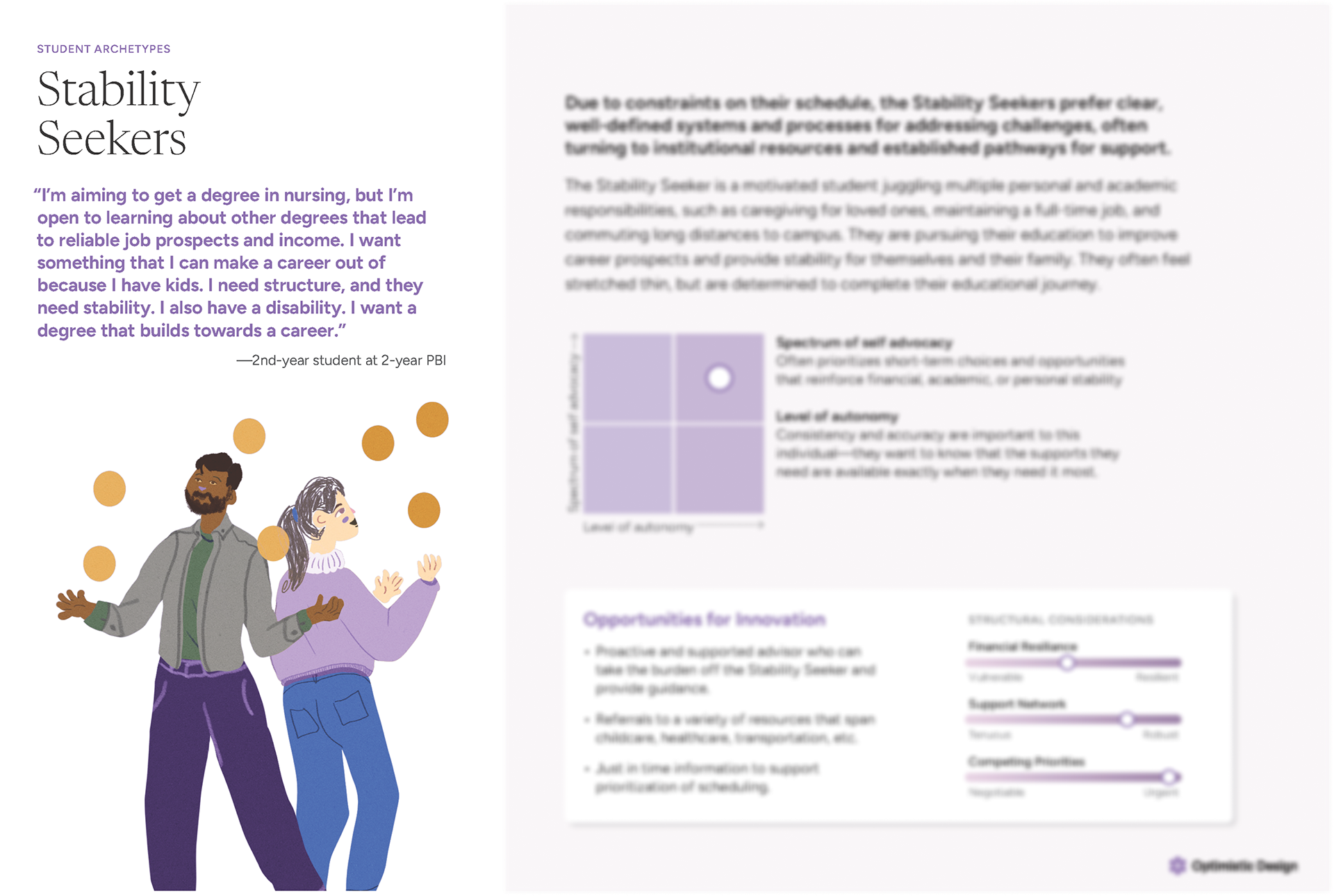
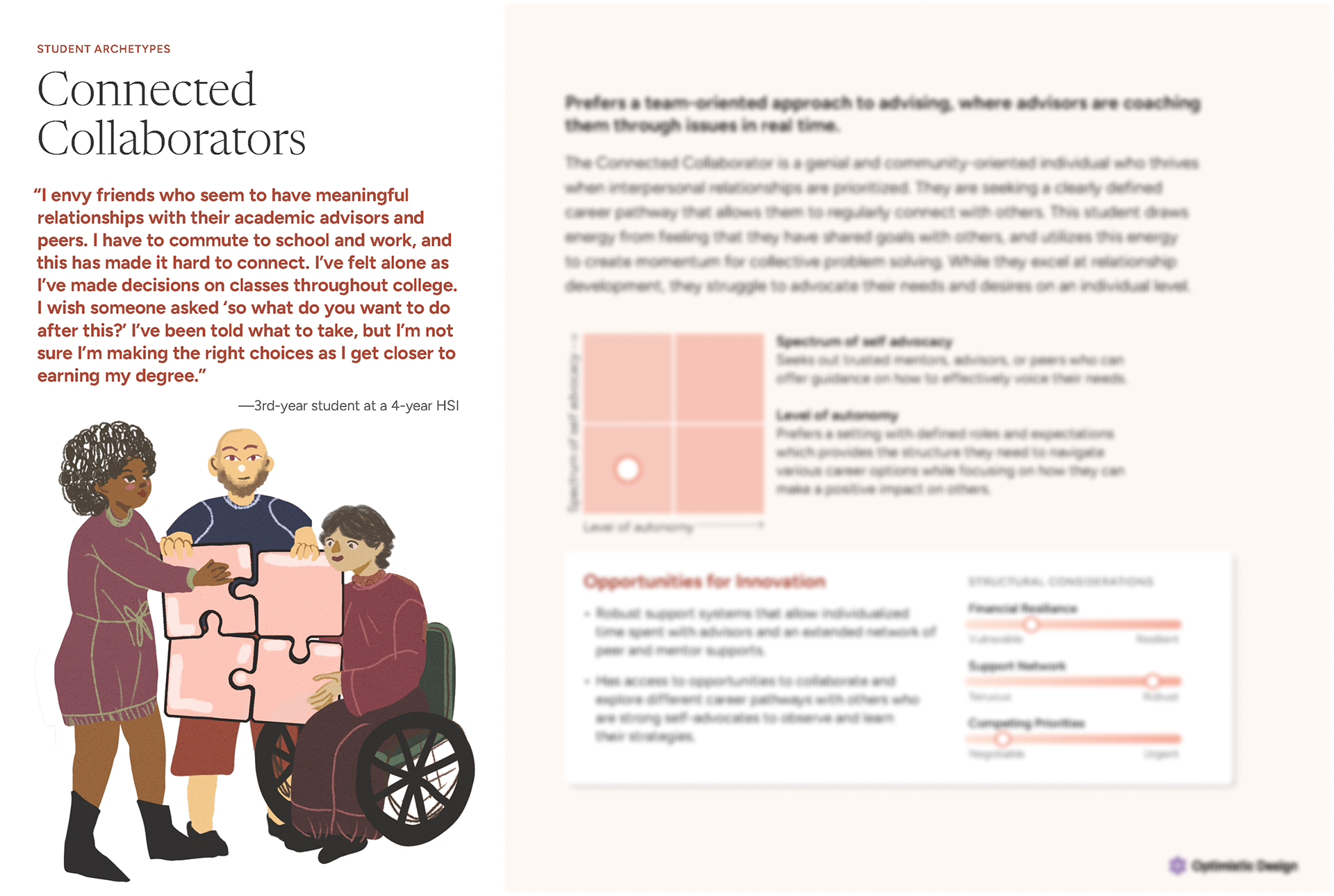
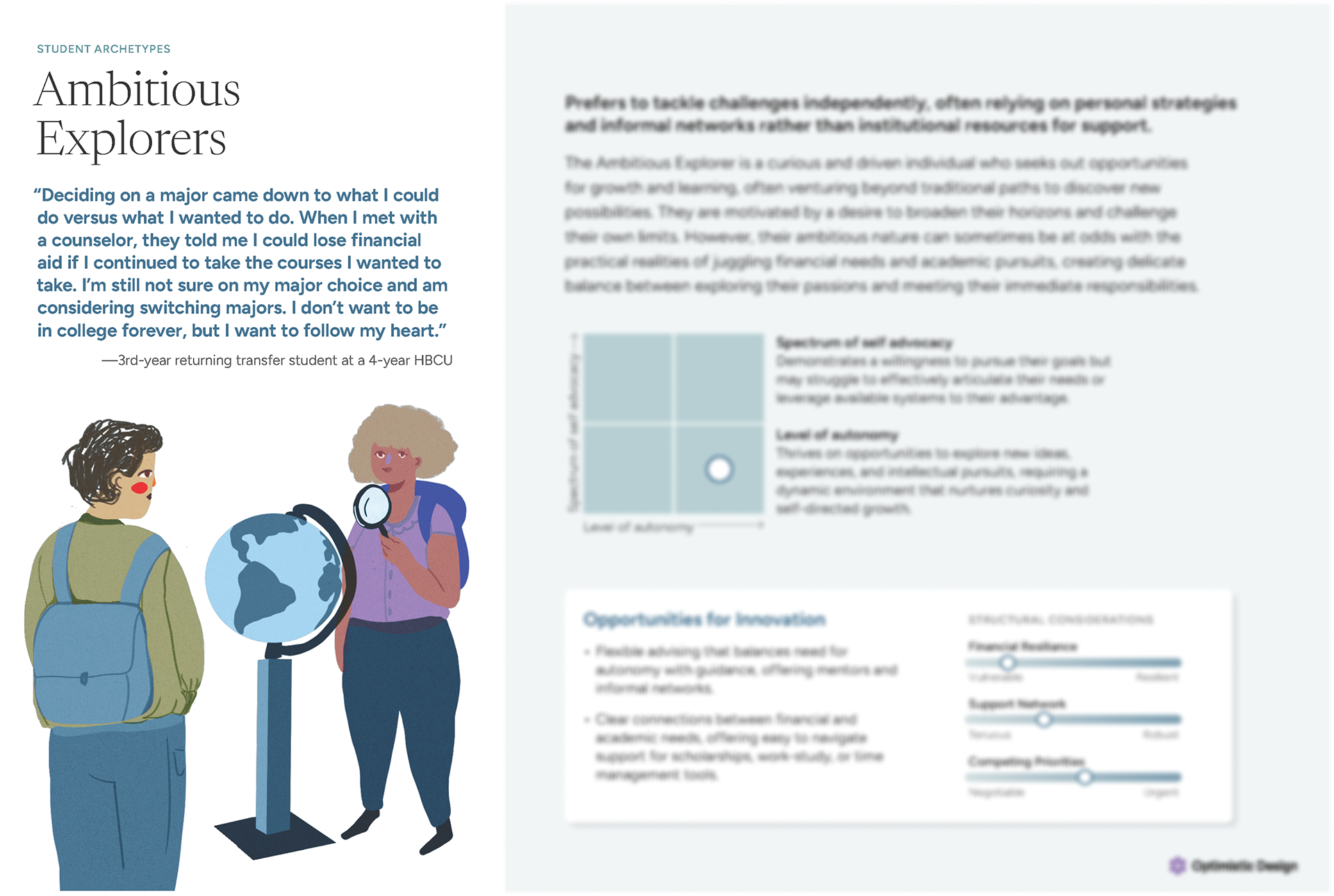
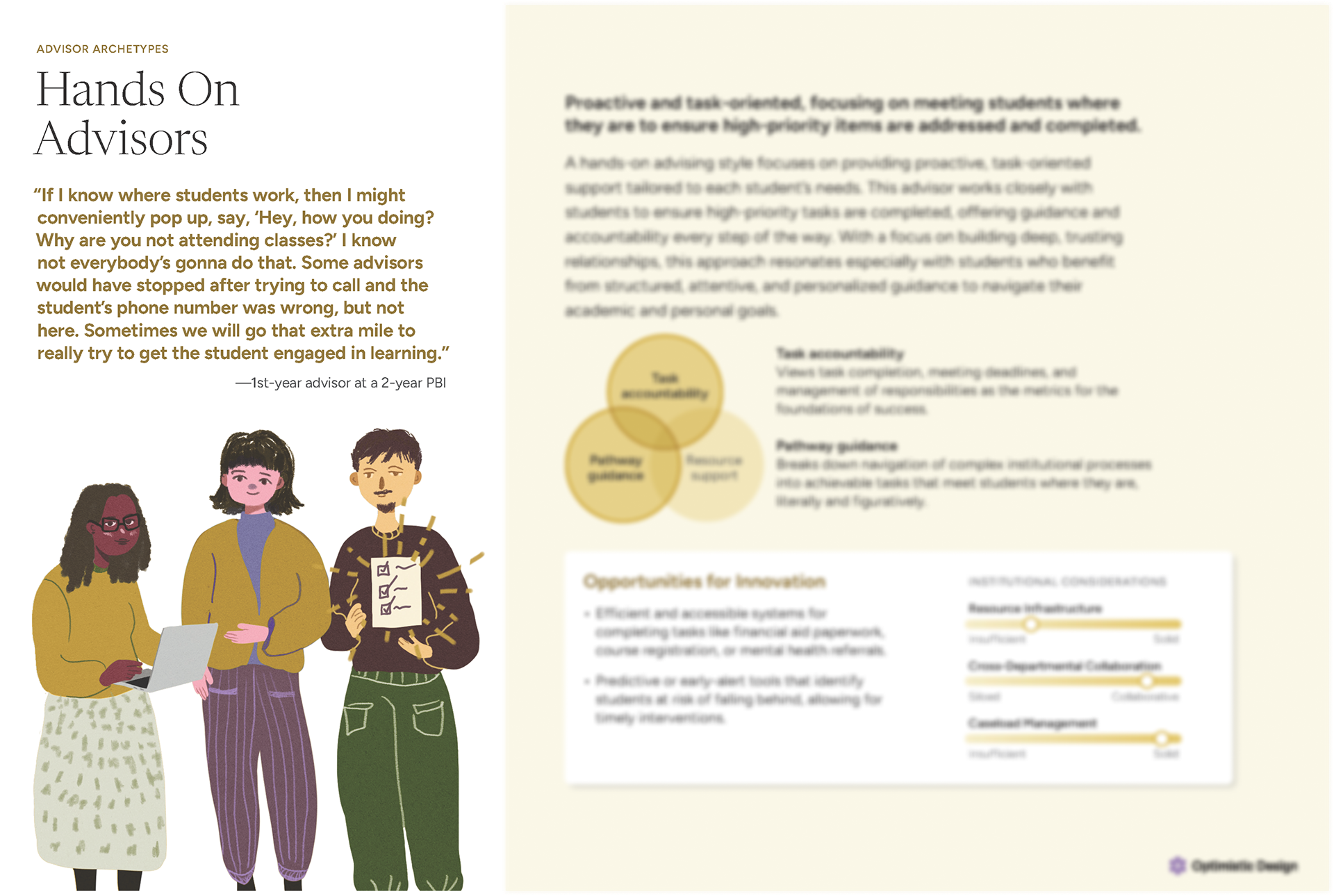
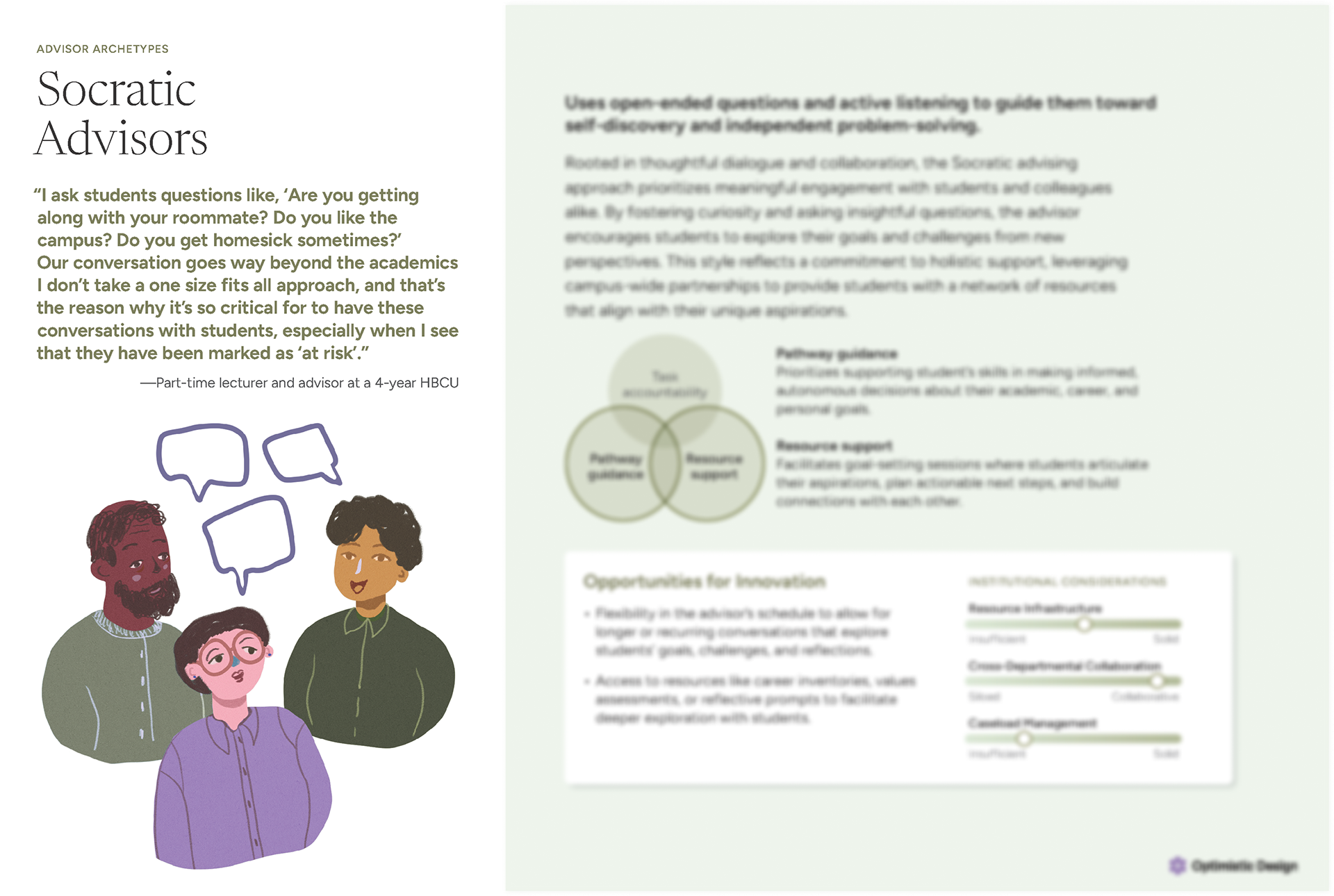

Journey Mapping
We mapped the student journey to enable critical thinking and ideation across college student journeys while outlining student needs, pitfalls, and product opportunities. This covered:
Pre-enrollment
Career and major alignment
Orientation
Registration
Taking Courses
Administrative Tasks
Preparing for Next Semester
Graduation
This process was extensive. I went through 12 different drafts before finalizing copy for the completed version.
Evaluating the Archetypes and Journey Maps
We workshopped the archetypes to evaluate whether or not students felt well represented. We also had them evaluate the journey map to determine if this felt representative of their experience.
We set this up on a Zoom whiteboard, received notes from participants and synthesized while we built out the final version.
Images were blurred to maintain confidentiality of data.
Completing the Journey Map and Sharing Findings
I finalized content with the CDO and VP of design across journey maps and archetypes, compiled a repository of the research and prepared a shareout.
Reflections
This project was a massive undertaking. I learned it's paramount to discuss constraints with logistics of highly specified participant groups. In a brief I put together to determine a recruitment agency, we were quoted over $50k for the specific parameters. This was not feasible. Moreover, working with MSIs, and specifically Tribal Colleges and Universities had rightfully hesitant or non-responsive folks. Research is historically extractive in these spaces. This kind of research is sensitive and requires ethical consideration. The parameters required attention to detail and close monitoring.
Synthesis was meticulous and stakeholders were given opportunities to provide proactive feedback. There was some scope creep, and they attempted to shift the scope several times. Though challenging, this work is supposed to be published, TBA, as a public good and can be used to inform systems at a national scale. It holds insights for systems currently existent or those to be built.
I gleaned insight on the value of transparency on constraints, proactive conversations and feedback and the continuous negotiation of limitation and possibility for effective action.

